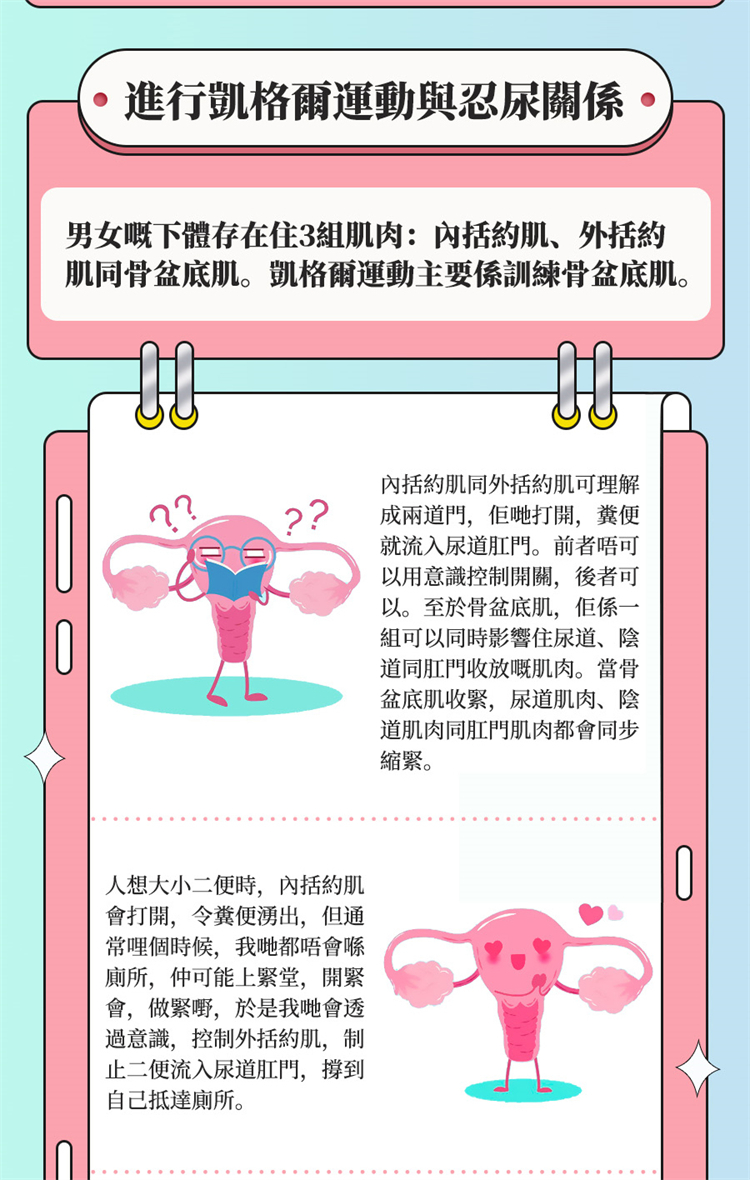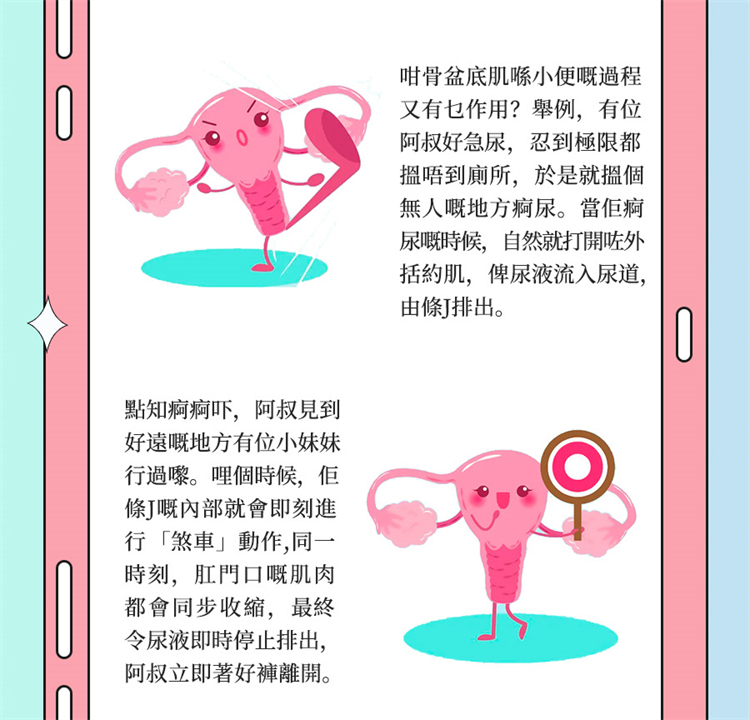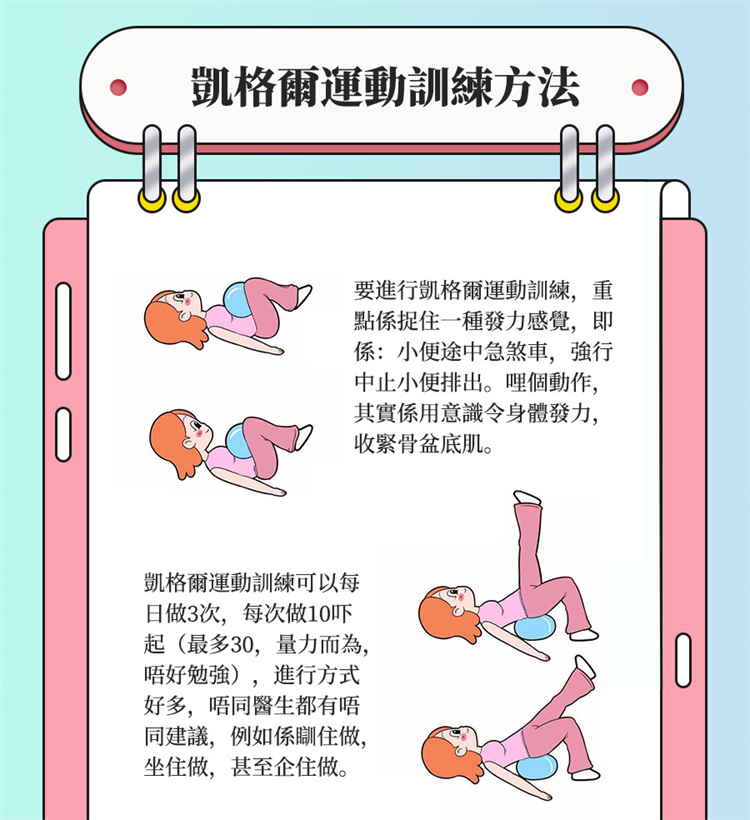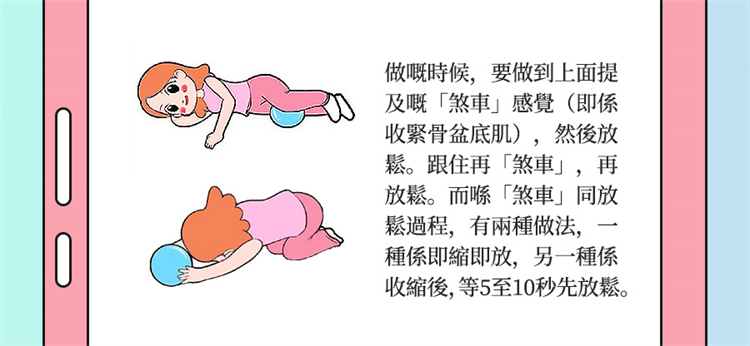The Benefits of Kegel Exercise

Kegel exercises, also known as "pelvic floor exercises" or "pelvic muscle exercises," were proposed by Dr. Arnold Kegel in 1948. Initially, they were designed to help women improve postpartum urinary incontinence. The purpose of Kegel exercises is to train the pelvic floor muscles, strengthening them to address a range of urinary, bowel, or sexual problems. The key to these exercises is mastering the sensation of "tightening the pelvic floor muscles," often referred to as "braking" in the text below. Want to know how to perform Kegel exercises? Are there any side effects? This article will explain all.


The Relationship Between Kegel Exercises and Urinary Control



Both men and women have three groups of muscles in their pelvic region: the internal sphincter, external sphincter, and pelvic floor muscles. Kegel exercises primarily focus on training the pelvic floor muscles. The internal and external sphincters can be understood as two gates that, when opened, allow feces to flow into the urethra and anus. The internal sphincter cannot be consciously controlled, but the external sphincter can. As for the pelvic floor muscles, they are a group of muscles that can simultaneously affect the urethra, vagina, and anus, allowing them to contract and relax together. When the pelvic floor muscles contract, the muscles around the urethra, vagina, and anus also tighten. When a person wants to urinate or have a bowel movement, the internal sphincter opens, allowing feces to flow out. However, at that moment, the person is usually not in the restroom and may be busy doing something else. Therefore, the person will use their consciousness to control the external sphincter, preventing the feces from flowing into the urethra or anus until they reach the restroom. So, what role does the pelvic floor muscle play during urination? For example, imagine an uncle who urgently needs to urinate but cannot find a restroom in time. He decides to urinate in a secluded place. As he starts urinating, he naturally opens the external sphincter, allowing urine to flow into the urethra and out. Suddenly, he sees a little girl walking far away. At that moment, his internal sphincter initiates an immediate "braking" action, and at the same time, the muscles around the anus contract synchronously, causing the urine to stop immediately, and the uncle quickly zips up his pants and leaves.
In essence, the entire "braking" action mentioned above is the uncle using his pelvic floor muscles to forcefully stop the flow of urine in the urethra. This is why some people say that doing Kegel exercises is related to holding urine. However, remember, never "brake" suddenly during urination or do Kegel exercises, as this can cause damage to the bladder.
Three Major Benefits of Kegel Exercises for Men and Women


Kegel Exercises Enhance Male Sexual Performance
The hardness of the penis is determined by the blood vessels! Blood flows into the penis through the arteries and exits through the veins simultaneously. When a large amount of blood enters the penis, it becomes erect and hard. If the blood flows too fast and cannot stay in the penis for an extended period, it will be difficult to maintain a lasting and hard erection. The only solution is to do Kegel exercises to strengthen the pelvic floor muscles, reduce the blood flowing out through the veins, allowing more blood to stay in the penis, making it harder and more enduring. Additionally, Kegel exercises can help prevent or improve premature ejaculation because strengthening the pelvic floor muscles allows men to better control when they ejaculate.
Kegel Exercises Improve Female Urinary Incontinence and Postpartum Relaxation
Many women experience urinary leakage when laughing, coughing, running, or lifting heavy objects due to weakened pelvic floor muscles after pregnancy and childbirth. The way to improve this is by doing Kegel exercises to strengthen the pelvic floor muscles. Moreover, for women, doing Kegel exercises can also tighten the vaginal muscles, enhancing sexual pleasure. Research has shown that strengthening the pelvic floor muscles can increase the intensity and duration of female orgasms.
Kegel Exercise Training Methods


To perform Kegel exercises, the key is to grasp a specific sensation, that is: during urination, abruptly stopping the flow of urine. This action is essentially using consciousness to exert force and tighten the pelvic floor muscles. Kegel exercise training can be done three times a day, doing 10 repetitions each time (up to 30, do what is comfortable and avoid straining). There are various ways to perform these exercises, and different doctors may have different suggestions, such as doing them lying down, sitting, or even standing. During the exercise, focus on the "braking" sensation mentioned earlier (i.e., tightening the pelvic floor muscles) and then relax. Then "brake" again and relax. In the process of "braking" and relaxing, there are two methods: one is immediate contraction and relaxation, and the other is contracting and holding for 5 to 10 seconds before relaxing. When will you see results? Typically, it takes three months of consistent training to see effects.
Common Questions About Kegel Exercises



Question: Are there any side effects of Kegel exercises?
Answer: Before doing Kegel exercises, make sure to empty the bladder and never perform them during urination, as it can harm the bladder. Of course, if you feel discomfort in your lower body while doing the exercises, it is advisable to consult a doctor!
Question: Besides doing Kegel exercises, are there any other methods for women to restore vaginal tightness?
Answer: Women can use vaginal weights, also known as Kegel balls, which come in different sizes and weights to help tighten the vaginal muscles. The safest and least embarrassing method is to insert the weight into the vagina while at home, while watching a show or while walking, sitting, or standing. During this process, the vagina will contract involuntarily. For a more proactive approach, you can insert the weight and then perform Kegel exercises. Generally, most women see results within a month. For women who have given birth, it may take longer!
Question: Where can I buy vaginal weights?
Answer: You can find various types of women's care and vaginal weight products on our website. We will deliver the products to your preferred location discreetly. For more details, you can visit the Women's Care product page!






































































-80x80w.jpg)








Leave a Comment